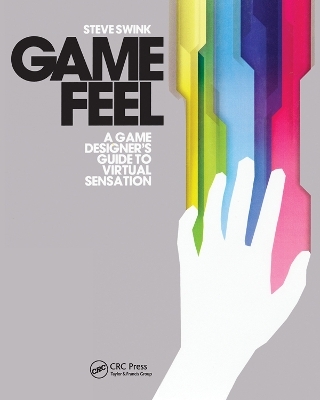
Game Feel
Focal Press US (Verlag)
978-0-12-374328-2 (ISBN)
"Game Feel" exposes "feel" as a hidden language in game design that no one has fully articulated yet. The language could be compared to the building blocks of music (time signatures, chord progressions, verse) - no matter the instruments, style or time period - these building blocks come into play. Feel and sensation are similar building blocks where game design is concerned. They create the meta-sensation of involvement with a game.
The understanding of how game designers create feel, and affect feel are only partially understood by most in the field and tends to be overlooked as a method or course of study, yet a game's feel is central to a game's success. This book brings the subject of feel to light by consolidating existing theories into a cohesive book.
The book covers topics like the role of sound, ancillary indicators, the importance of metaphor, how people perceive things, and a brief history of feel in games.
The associated web site contains a playset with ready-made tools to design feel in games, six key components to creating virtual sensation. There's a play palette too, so the desiger can first experience the importance of that component by altering variables and feeling the results. The playset allows the reader to experience each of the sensations described in the book, and then allows them to apply them to their own projects. Creating game feel without having to program, essentially. The final version of the playset will have enough flexibility that the reader will be able to use it as a companion to the exercises in the book, working through each one to create the feel described.
Steve Swink
INTRODUCTION PART 1: Deconstruction1. Why Feel, Why Now?This chapter focuses on the impetus behind the book, asking the reader to recall the sensation of controlling a virtual avatar and talking about why feel is so important (and why it is often overlooked.)2. The Grand Scheme of Game DesignThis chapter assigns feel a place in the larger realm of game design, defining its scope and boundaries, talking about how it fits into creating the Ultimate Game Experience of life-enriching flow and empowerment. Using diagrams and research derived from Maslow's Pyramid of Wants and Will Wright's concept of Granularity, feel is identified as one of the atomic units of game construction, one of the most basic building blocks of interactivity. 3. Games that don't Feature Virtual Sensation There are some types of digital games - Civilization, Solitaire, the Sims, and so on - that don't focus on feel or utilize it as one of their core elements, separating them from what will be discussed in the book. An interesting aside is that we are indeed experiencing virtual sensation whenever we use a mouse but that it is so intuitive and familiar that there's really no rational motion translation or skill to build. This brings up an interesting point: much of the pleasure of controlling something purely visual is in the challenge of mastering it, in the obfuscation. In fact, we're wired to receive pleasure for remapping our neural pathways to gain skill and mastery in this way, and it's one of the reasons that overcoming challenges (playing games) is so pleasureable. 4. What is Feel?How do players experience feel? It seems to be mostly subconscious, though there are some artifacts that will be of use to us. Citations here of various forum scrapings and interviews with players looking for feel des
| Erscheint lt. Verlag | 19.11.2008 |
|---|---|
| Reihe/Serie | Morgan Kaufmann Game Design Books |
| Verlagsort | Burlington |
| Sprache | englisch |
| Maße | 189 x 246 mm |
| Gewicht | 574 g |
| Themenwelt | Informatik ► Software Entwicklung ► Spieleprogrammierung |
| ISBN-10 | 0-12-374328-1 / 0123743281 |
| ISBN-13 | 978-0-12-374328-2 / 9780123743282 |
| Zustand | Neuware |
| Haben Sie eine Frage zum Produkt? |
aus dem Bereich


